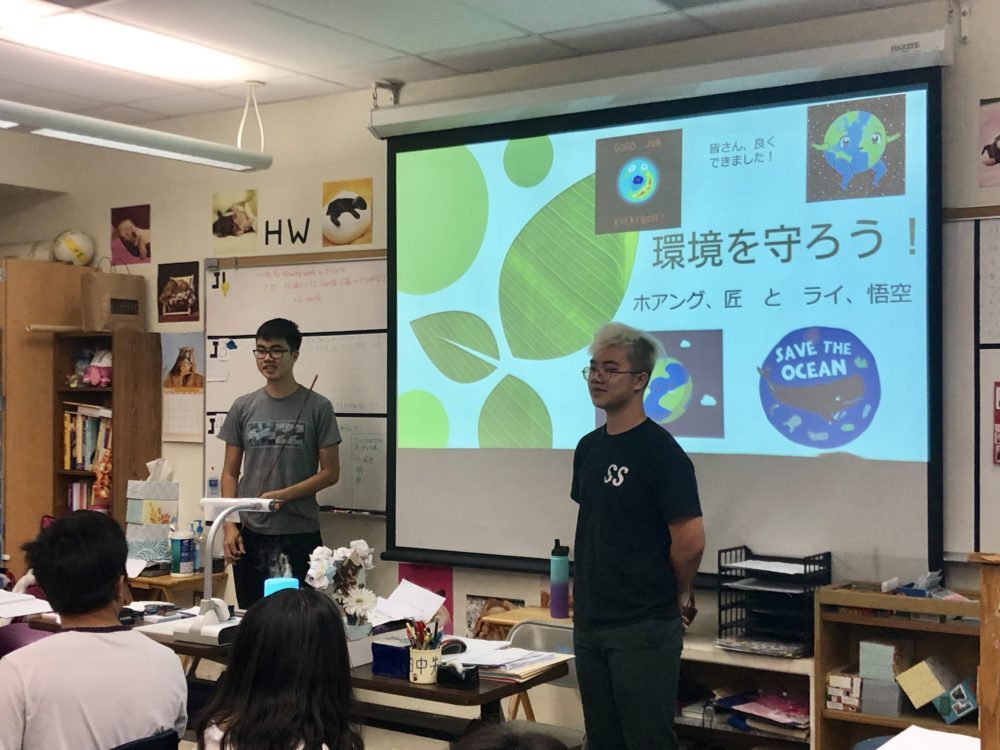
By Jennifer Trend, Lifestyle Editor
In Japanese teacher Saori Tanaka’s classes, the environment plays a role just as important as the lessons on grammar and culture. It is a burning issue that has captivated the attention of the world just recently as well as a significant part of Japanese culture.
Tanaka started integrating these environmental lessons around 10 years ago, when the class was updated with the current “Adventures with Japanese” textbooks. Chapter six of the textbook, used in both Japanese 3 and 4/AP, is wholly dedicated to the environment and what students can do to leave a greener footprint on the earth.
The topic of environmentalism is covered twice throughout the levels of Japanese: once at the end of Japanese 3, and once again at the beginning of Japanese 4/AP. Students are able to review what they’ve learned and Tanaka is given another chance to solidify the importance of protecting the environment.
“It’s a very, very important topic,” said Tanaka. “Because [in the future,] there will be nothing. It’s important to animals and humans. If we don’t do something now, it will become a hard problem in the future.”
Tanaka assigns her Japanese 4/AP class multiple projects that require students to think outside the box and come up with ways to live a healthier lifestyle that doesn’t hurt the environment.
To finish off the chapter, Japanese 4/AP students paired up and brainstormed four creative ideas on ways that they could reuse old or unneeded things. Some examples included turning old plastic bottles into small gardens, using glass bottles to build houses, using metal straws instead of plastic ones and so much more.
Students are also given a video project. Every month, they must come up with a new way to reduce their carbon footprint and record a video explaining what new thing they have done. Whether it be biking to school instead of taking a car or using a reusable water bottle instead of a plastic water bottle, Japanese 4/AP students have a variety of ideas to choose from. Tanaka’s goal is that students are always thinking about their impact and power to change, no matter how big or small.
“We don’t leave [environmentalism] when we end the chapter, but rather, we do little increments throughout the year,” said Tanaka. “There is no meaning if we stop talking about it after the chapter.”
Even the way Tanaka runs her class reflects her teachings. This way, students can become accustomed to protecting the environment in small ways.
“I recycle paper, have an area for recycling items, drink water from a Hydro Flask and store water in a pitcher because I don’t want to buy plastic bottles. I also scale some of the worksheets and tests to a half sheet or use the backs of already used papers or do Canvas quizzes.”
For those who may not know where to start but want to be more friendly to the environment, she suggests starting small. A seemingly small action such as bringing water in a reusable container instead of a plastic water bottle can make a big difference. By choosing the reusable container, you save the space on Earth that the empty water bottle would otherwise fill up. By refusing to buy a plastic water bottle, you lower the demand for plastic bottles and companies will put fewer into circulation because of that message.
If we just take a moment to understand the ripple effect a small decision can offset and the ability humans have to greatly impact the environment for better or for worse, we can begin to correct our ways and do better. Let’s protect the environment, one choice at a time.





